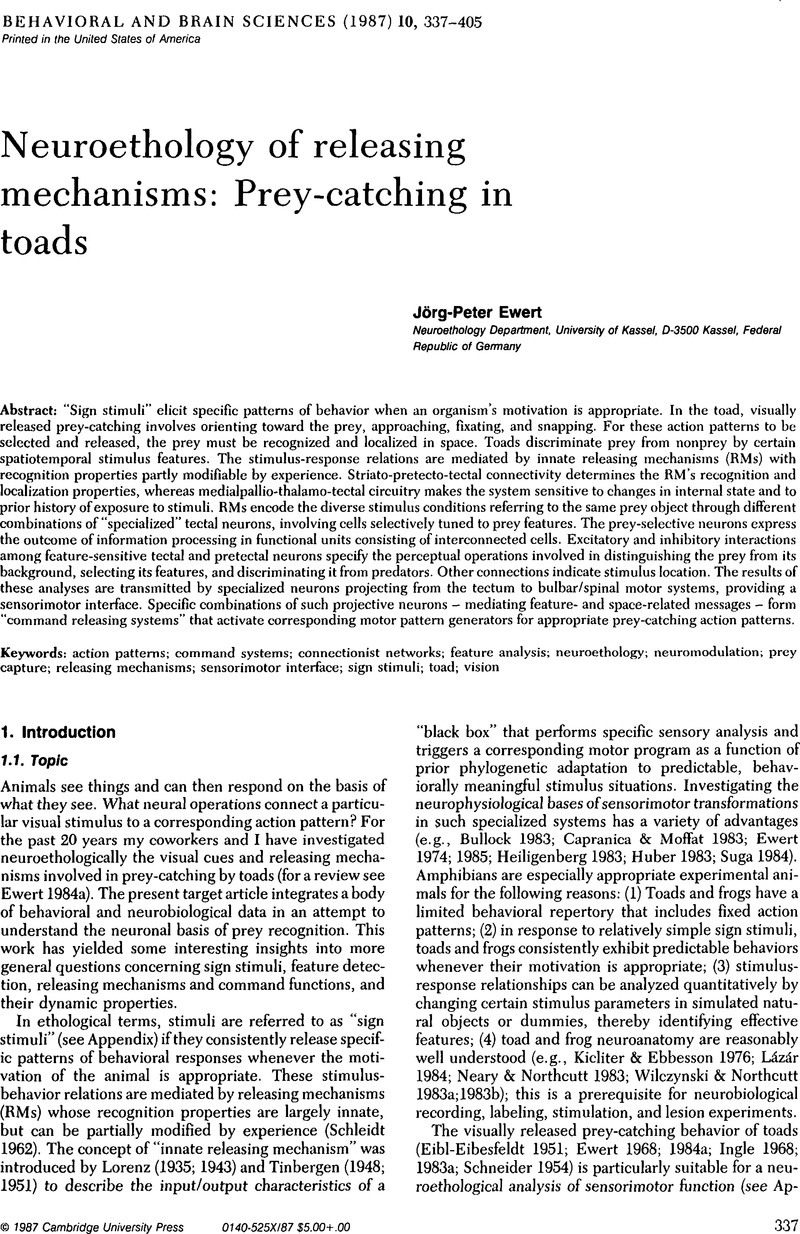Crossref Citations
This article has been cited by the following publications. This list is generated based on data provided by Crossref.
Ewert, Jörg-Peter
1989.
Visuomotor Coordination.
p.
39.
Lara, Rolando
1989.
Visuomotor Coordination.
p.
833.
Matsumoto, N.
Schwippert, W.W.
Beneke, T.W.
and
Ewert, J.-P.
1991.
Forebrain-mediated control of visually guided prey-catching in toads: investigation of striato-pretectal connections with intracellular recording/labeling methods.
Behavioural Processes,
Vol. 25,
Issue. 1,
p.
27.
Ewert, J.-P.
Matsumoto, N.
Schwippert, W. W.
and
Beneke, T. W.
1991.
Visual Structures and Integrated Functions.
Vol. 3,
Issue. ,
p.
297.
Ludwig, Kirk
1993.
A dilemma for Searle's argument for the Connection Principle.
Behavioral and Brain Sciences,
Vol. 16,
Issue. 1,
p.
194.
Julesz, Bela
1993.
Consciousness and focal attention: Answer to John Searle.
Behavioral and Brain Sciences,
Vol. 16,
Issue. 1,
p.
191.
Shanon, Benny
1993.
What next? Ramifications for empirical psychology.
Behavioral and Brain Sciences,
Vol. 16,
Issue. 1,
p.
197.
Pfeifer, Karl
1993.
Causal dispositions, aspectual shape and intentionality.
Behavioral and Brain Sciences,
Vol. 16,
Issue. 1,
p.
196.
Searle, John R.
1993.
Consciousness, explanatory inversion and cognitive science.
Behavioral and Brain Sciences,
Vol. 16,
Issue. 1,
p.
189.
Goel, Vinod
1993.
Comments on the Connection Principle.
Behavioral and Brain Sciences,
Vol. 16,
Issue. 1,
p.
189.
Searle, John R.
1993.
Consciousness, attention and the Connection Principle.
Behavioral and Brain Sciences,
Vol. 16,
Issue. 1,
p.
198.
Miller, Gordon L.
2021.
The Intervening Touch of Mentality: Food Seeking in Frogs and Whitehead’s Philosophy of Organism.
Process Studies,
Vol. 50,
Issue. 2,
p.
155.



